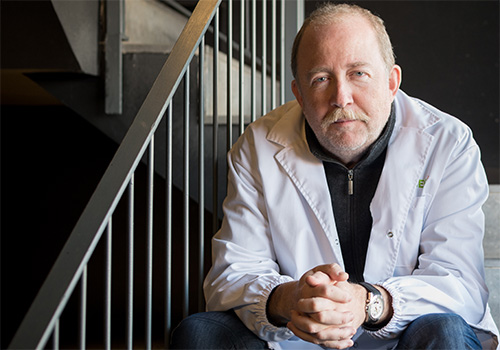Brain formation is a long and complex process that begins in the early stages of embryonic development. One of the parts formed is the cerebral cortex, which is involved in important activities such as motor, sensory and visual activity, and in higher functions such as imagination and thought.

Although several of the chemical signals involved in cortex development have been defined in recent years, the role played by mechanical signals and cell traction forces in this process was unknown until now. For the first time, a scientific team led by the Institute for Bioengineering of Catalonia (IBEC), in collaboration with the University of Barcelona, has described the role of mechanical signals in cortical development in a specific type of cells—Cajal-Retzius cells.
Cajal-Retzius cells, discovered by Santiago Ramón y Cajal and Gustaf Retzius in 1890 and 1892, respectively, are the first neurons to originate in the embryonic cerebral cortex. In mice, these cells are generated between days eight and thirteen of embryonic development in four proliferation zones of the brain located outside the cerebral cortex. The different groups of Cajal-Retizus cells migrate quickly from these regions to a surface area of the cortex called the cortical preplate.
With this coordinated migration, Cajal-Retzius neurons are involved in the subsequent formation of the layers of the cerebral cortex observed in adulthood. According to the results of the study, the coordinated action of the chemical and mechanical signals in the extracellular matrix of the surface layer of the cortex (also called the marginal zone or layer I) guides the migration and distribution of Cajal-Retzius cells in the developing cortex.
Using neurobiotechnology to understand early cortical development
To learn about the different mechanical signals that guide the migration of pioneering neurons, the team led by José Antonio del Río, principal investigator at the Molecular and Cellular Neurobiotechnology group at IBEC, carried out several experimental approaches.
“In our starting hypothesis, we thought that possible differences in the rigidity of the extracellular matrix between different regions could be a significant factor when analysing cell migration. Therefore, we decided to observe changes in regional rigidity through atomic force microscopy, as well as deciding to mimic the differences in crops using three-dimensional scaffolding”, explained Del Río, who is a Professor of Cell Biology in the Faculty of Biology at the University of Barcelona, member of the Institute of Neuroscience at the University of Barcelona (UBNeuro) and member of Ciberned. The team developed up to eight different types of cultures. “We then grew Cajal-Retzius cells from different regions on these scaffolds and analysed their behaviour.”
But how do Cajal-Retzius cells detect the differences in stiffness in the extracellular matrix? “The response could be linked to the existence of ion channels involved in mechanotransduction in this cell type,” says Del Río. “To evaluate it, we developed a loss-of-function experiment using a spider venom that inhibits cationic mechanosensitive channels. Cajal-Retzius cells were able to “feel” the changes in extracellular rigidity. In addition, we were able to verify that different groups of Cajal-Retzius cells have intrinsic differences in their ability to exert mechanical forces on the substrate.”
Thanks to these experiments, the research team was able to conclude that the mobile capacities of Cajal-Retzius cells and their distribution in the cerebral cortex are also modulated by the specific mechanical properties of Cajal-Retzius cells themselves, depending on their area of origin and the differential rigidity of the migratory pathways that follow the different groups of Cajal-Retzius cells.
The importance of mechanobiology in developmental neurobiology
In humans, poorly functioning or migrating Cajal-Retzius cells can lead to lissencephaly, disease that involve a lack of folds in the cerebral cortex. Sadly, the disease leads to a life expectancy of just a few years.
“Due to its high impact, we think that mechanobiology will become increasingly important, not only in terms of studying and understanding how tissues and organs (including the brain) develop, but also in understanding the processes responsible for tissue malformation. All this information will be very useful to prevent diseases in various organs and tissues, such as lissencephaly”
Concluded José Antonio del Río.
Reference article: López-Mengual, Ana; Segura-Feliu, Miriam; Sunyer, Raimon; Sanz-Fraile, Héctor; Otero, Jorge; Mesquida-Veny, Francina; Vanessa Gil; Arnau Hervera Abad; Isidre Ferrer; Jordi Soriano-Fradera; Xavier Trepat; Ramon Farre; Daniel Navajas; Jose A. Del Rio. (2022): Involvement of Mechanical Cues in the Migration of Cajal-Retzius Cells in the Marginal Zone During Neocortical Development. Frontiers. Collection. https://doi.org/10.3389/fcell.2022.886110





